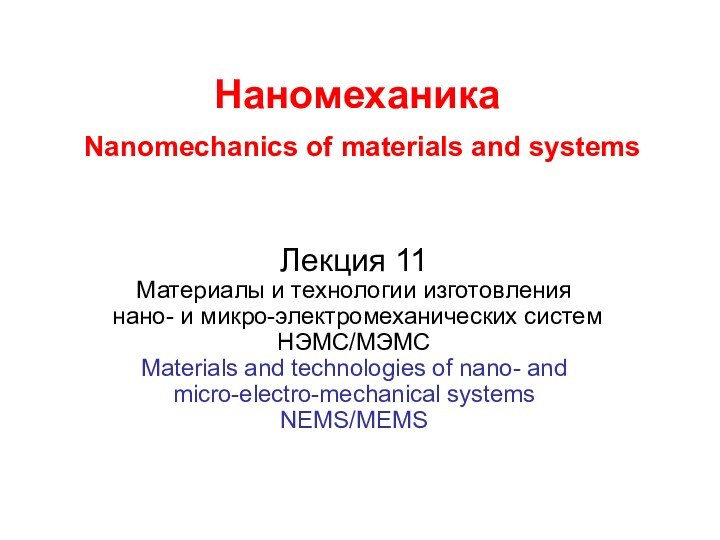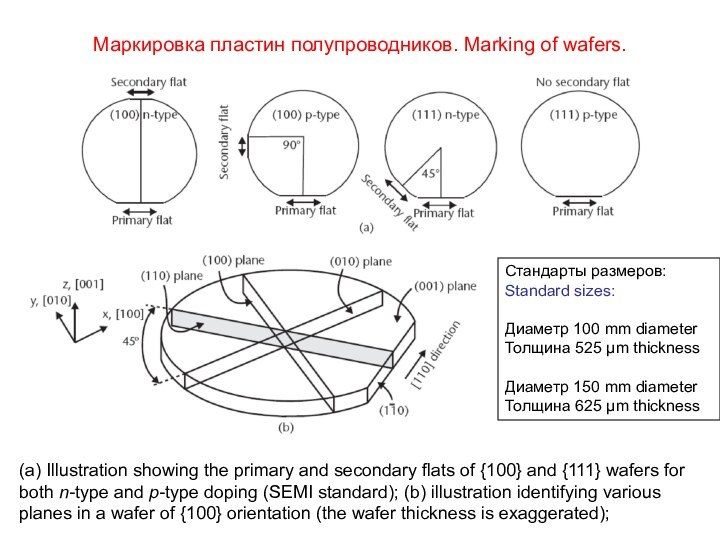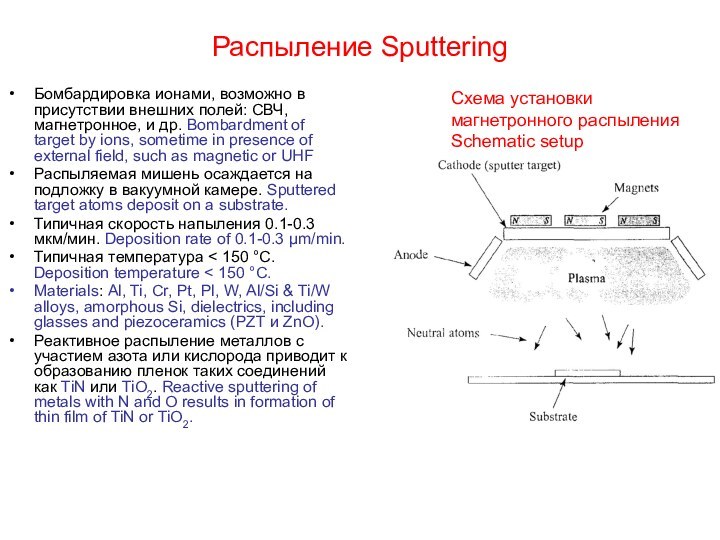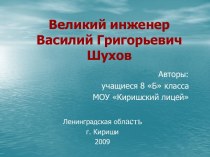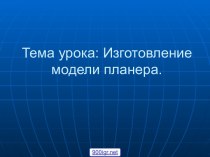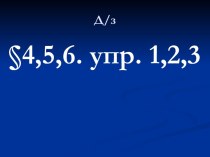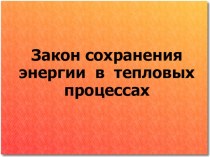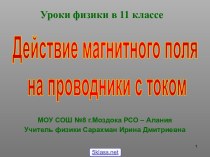Слайд 2
“It was the best of times, it was
the worst of times, it was the age of
wisdom, it was
the age of foolishness…” from A Tale of Two Cities by Charles Dickens, engraved
on a thin silicon nitride membrane. The entire page measures a mere 5.9 μm on a
side, sufficiently small that 60,000 pages—equivalent to the Encyclopedia Britannica—
can fit on a pinhead. The work, by T. Newman and R. F. W. Pease of Stanford
University, won the Feynman challenge in 1985.
(Courtesy of: Engineering & Science, California Institute of Technology, Pasadena, California.)
Хранение информации. Information memory.
Слайд 3
Устройства памяти
35 Xe atoms
Слайд 4
Оптическая система. Optical system.
Photograph of a Fresnel microlens
on an adjustable platform made of five hinged
polysilicon plates.
(Courtesy of: M. Wu, University of California, Los Angeles.)
Линза Френеля
Шарнир
Слайд 5
Photograph of the NovaSensor NPP-301, a premolded plastic,
surface mount (SOIC-type) and absolute pressure sensor. (Courtesy of:
GE NovaSensor of Fremont, California.)
Illustration of a premolded plastic package. Adapting it to pressure sensors involves incorporating fluid ports in the premolded plastic housing and the cap.
5 mm
Датчик давления. Pressure sensor.
Слайд 6
Photograph of a disposable blood pressure sensor for
arterial-line measurement in
intensive care units. The die (not visible)
sits on a ceramic substrate and is covered with a plastic cap that includes an access opening for pressure. A special black gel dispensed inside the opening protects the silicon device while permitting the transmission of pressure. (Courtesy of: GE NovaSensor, Fremont, California .)
пластик
гель
тонкопленочный
резистор
керамика
Датчик кровяного давления. Blood pressure sensor.
Слайд 7
Преимущества Si как базового материала НЭМС
Advantages of Si
in NEMS/MEMS
Дешевизна. Cheap.
Высокое кристаллическое совершенство. High crystalline quality.
Возможность создания
гетероструктур с SiO, SiN, SiC, металлами (Al, Ti, W, Cu, и др.), полимерами и т.д. Heterostructures with SiO, SiN, SiC, Al, Ti, W, Cu, polymers, etc.
Хорошие механические и термические свойства.
Good mechanical properties.
Электрические свойства, изменяемые в широком диапазоне.
Widely tunable electrical properties.
Возможность интеграции с микроэлектронными приборами в одном чипе. Integration of MEMS and microelectronics in a chip.
Наличие монокристаллической, аморфной и поликристаллической форм. Set of monocrystalline, amorphous and polycrystalline forms.
Химическая стабильность, нетоксичность. Chemical stability, non-toxic.
Наличие разработанных технологий и технологического оборудования. Availability of well developed technology and equipment.
Слайд 8
Формы и содинения кремния. Si forms and compounds.
Crystalline

silicon is a hard and brittle material deforming elastically
until itreaches its yield strength, at which point it breaks. Its tensile yield strength is 7 GPa,which is equivalent to a 700-kg weight suspended from a 1-mm2 area. Its Young’s modulus is dependent on crystal orientation, being 169 GPa in <110> directions and 130 GPa in <100> directions—near that of steel. Silicon is a very good thermal conductor with a thermal conductivity greater than that of many metals and approximately 100 times larger than that of glass. In complex integrated systems, the silicon substrate can be used as an efficient heat sink.
The mechanical properties of polycrystalline and amorphous silicon vary with deposition conditions, but, by and large, they are similar to that of single crystal silicon. Both normally have relatively high levels of intrinsic stress (hundreds of MPa) after deposition, which requires annealing at elevated temperatures (>900ºC).
Silicon is such a successful material because it has a stable oxide that is electrically insulating—unlike germanium, whose oxide is soluble in water, or gallium arsenide, whose oxide cannot be grown appreciably. Various forms of silicon oxides (SiO2, SiOx, silicate glass) are widely used in micromachining due to their excellent electrical and thermal insulating properties.
Silicon nitride (SixNy) is also a widely used insulating thin film and is effective as a barrier against mobile ion diffusion—in particular, sodium and potassium ions found in biological environments. Its Young’s modulus is higher than that of silicon and its intrinsic stress can be controlled by the specifics of the deposition process. Silicon nitride is an effective masking material in many alkaline etch solutions.
Слайд 9
Физические свойства некоторых материалов НЭМС
Слайд 11
Оптическое отражение от кремния и некоторых металлов
Reflectivity of
Si and some metals
Слайд 12
Области применения различных материалов в НЭМС. Application areas
of MEMS materials.
Слайд 13
Базовый цикл создания НЭМС. Base cycle of NEMS
formation.
Слайд 14
Маркировка пластин полупроводников. Marking of wafers.
(a) Illustration showing
the primary and secondary flats of {100} and {111}
wafers for
both n-type and p-type doping (SEMI standard); (b) illustration identifying various planes in a wafer of {100} orientation (the wafer thickness is exaggerated);
Стандарты размеров:
Standard sizes:
Диаметр 100 mm diameter
Толщина 525 μm thickness
Диаметр 150 mm diameter
Толщина 625 μm thickness
Слайд 15
Эпитаксия кремния – молекулярно-лучевая или газофазная
Epitaxy of Si
– MBE and VPE
Массовое промышленное производство пленок Si -
газофазная эпитаксия. Vapor phase epitaxy (VPE) – mass production of Si.
Temperature > 800 °C. Growth rate 0.2-4 μm/min.
Si sources are SiH4, SiCl4, SiH2Cl2.
Doping via AsH3, PH3 и B2H6.
Substrates are Si (100 mm or 150 mm), sapphire in special cases.
Слайд 16
CVD
Химическое осаждение из газовой фазы. Chemical vapor deposition
Temperature
> 300 °C.
Growth rate from 5 to 100 nm/min.
Materials:
polysilicon (650-700°С),
amorphous silicon (550-600 °С),
SiO (силан + кислород, 300-900 °С),
SiN (силан + аммиак, 700-900 °С),
W, Ti, Tm, metal nitrides, Cu, dielectrics etc.
Остаточные напряжения в поликремнии и других материалах требуют высокотемпературного отжига. Residual stress in polisilicon and other materials requires high-temperature anneal.
Слайд 17
Термическое окисление. Thermal oxidation
Атмосфера кислорода, oxygen flux, 850-1150
°С.
Аморфный SiO2, толщина зависит от температуры, давления, времени. Amorphous
Si films with thickness depending on ambient temperature, pressure and process time.
В пленках термического окисла образуются остаточные сжимающие напряжения. Thermal oxide possesses residual compressive stress.
Apparatus for the wet oxidation of silicon. Dry oxides may be grown by bypassing the heated water bath.
Слайд 18
Распыление Sputtering
Бомбардировка ионами, возможно в присутствии внешних полей:
СВЧ, магнетронное, и др. Bombardment of target by ions,
sometime in presence of external field, such as magnetic or UHF
Распыляемая мишень осаждается на подложку в вакуумной камере. Sputtered target atoms deposit on a substrate.
Типичная скорость напыления 0.1-0.3 мкм/мин. Deposition rate of 0.1-0.3 μm/min.
Типичная температура < 150 °С. Deposition temperature < 150 °C.
Materials: Al, Ti, Cr, Pt, Pl, W, Al/Si & Ti/W alloys, amorphous Si, dielectrics, including glasses and piezoceramics (PZT и ZnO).
Реактивное распыление металлов с участием азота или кислорода приводит к образованию пленок таких соединений как TiN или TiO2. Reactive sputtering of metals with N and O results in formation of thin film of TiN or TiO2.
Схема установки магнетронного распыления
Schematic setup
Слайд 19
Испарение Evaporation
Термическое, лазерное, электронное Thermal, laser, electron-beam heating
Источник
испаряется в вакуумной камере и осаждается на подложку. Evaporating
source deposits on a substrate
Скорость напыления 5-100 нм/мин. Deposition rate of 5-100 nm/min.
Materials: Al, Si, Ti,
Au, Cr, Mo, Ta, Pd,
Pt, Ni/Cr, Al2O3, и пр.
В пленках обычно есть
сильные остаточные
растягивающие
напряжения. Films are residually stressed.
Слайд 20
Spin-On Methods
Жидкий раствор напыляется из сопла на середину
пластины, которая раскручивается со скоростью от 500 до 5000
оборотов в минуту в течение 0.5-1 мин. для образования пленки постоянной толщины. Liquid solution drops in the middle of rotating plate. Rotation rate of 500 to 5000 per minute requires to produce a uniform film.
Материалы: резисты, органические полимеры, стекла.
Materials are resists, organic polymers, glasses.
Слайд 21
Литография Litogrophy
Нанесение резиста
Deposition of resist.
Перенесение изображения маски на
резист.
Imaging mask on resist
Селективное травление резиста и материала под
ним.
Selective etching of resist and underlying material.
An illustration of proximity and projection lithography. In proximity mode, the mask is within 25 to 50 μm of the resist. Fresnel diffraction limits the resolution and minimum feature size to ~ 5 μm. In projection mode, complex optics image the mask onto the resist. The resolution is routinely better than one micrometer. Subsequent development delineates the features in the resist.
Слайд 22
Фотолитография. Photolithography.
Слайд 23
Lift-off метод
Ппенка напыляется на профиль резиста. Резист удаляется
вместе с нанесенной на него сверху пленкой.
Слайд 24
Фотолитография. Photolithography.
Проекционная фотолитография позволяет получить разрешение λ/2. Diffraction
limit of resolution is λ/2.
Используется УФ свет, UV
light sources
365 nm Hg лампа
243 nm Kr-F лазер
193 nm Ar-F лазер
Рентгеновское синхротронное излучение позволяет получить разрешение 30 nm
X-ray synchrotron source provides up to 30 nm
Слайд 25
Использование ближнего поля для улучшения разрешения
Near-field techniques to
improve resolution
Слайд 26
Нанесение резиста и литография для поверхности с глубоким
профилем
Deposition of resist on a surface with deep profile
Слайд 27
Двусторонняя литография. Double side lithography.
Double-sided alignment scheme for
the SUSS MA-6 alignment system: (a) the image of
mask alignment marks is electronically stored; (b) the alignment marks on the back side of the wafer are brought in focus; and (c) the position of the wafer is adjusted by translation and rotation to align the marks to the stored image. The right-hand side illustrates the view on the computer screen as the targets are brought into alignment.
Слайд 28
Литография с помощью электронных пучков
Electron beam lithography
Холодная полевая
эмиссия электронов Шоттки. Cold field emission.
Термоионная эмиссия электронов (2000-2500
К)
Thermo-ionic emission
Вольфрам W (долговечный источник) (durable source)
Гексаборид лантана LaB6 (яркий источник) (bright source)
Можно получить разрешение лучше 10 нм
Achievable resolution is better than 10 nm
Электронный пучок ускоряется напряжением 100 – 200 кВ
Electron beam is accelerated by 100-200 kV voltage
Литография реализуется как процесс движения пучка:
не требуется маска (no mask required)
производительность ограничена
(limited writing rate)
Слайд 29
Сфокусированные ионные пучки
Focused ion beams
Альтернатива электронной литографии
Alternative to
electron beam lithography
Нет маски No mask
Можно получить разрешение лучше
10 нм
Resolution is bettter than 10 nm
Ионы (Ions)
легкоплавкие металлы Ga, Bi, Hg
инертные газы Ar, He, Xe
Слайд 30
Scanned-Probe Lithography
AFM and STM
Resolution 1-100 nm
No mask
Limited writing
rate
Слайд 31
Наноштамповка Nanoimprint
Nanoimprint lithography: (a) press hard mold into
resist coating; (b) remove mold; and (c) RIE to
remove residue
Слайд 32
Штамповка литографической маски
Microcontact printing: (a) create master; (b)
form PDMS stamp and peel off; (c) coat with
“ink”; (d) press inked stamp against metal and remove, leaving ink monolayer; (e) use selfassembled monolayer as an etch mask; or (f) as a plating mask.
Слайд 33
Заключение Conclusion
Базовым материалом НЭМС является кремний
Si is the
material of choice for majority of NEMS
Последовательные циклы напыление-литография-травление
позволяет получать структуры со сложным пространственным профилем
Consequent cycles of deposition-lithography-etching allow one to produce structures with complicated 3D profile
